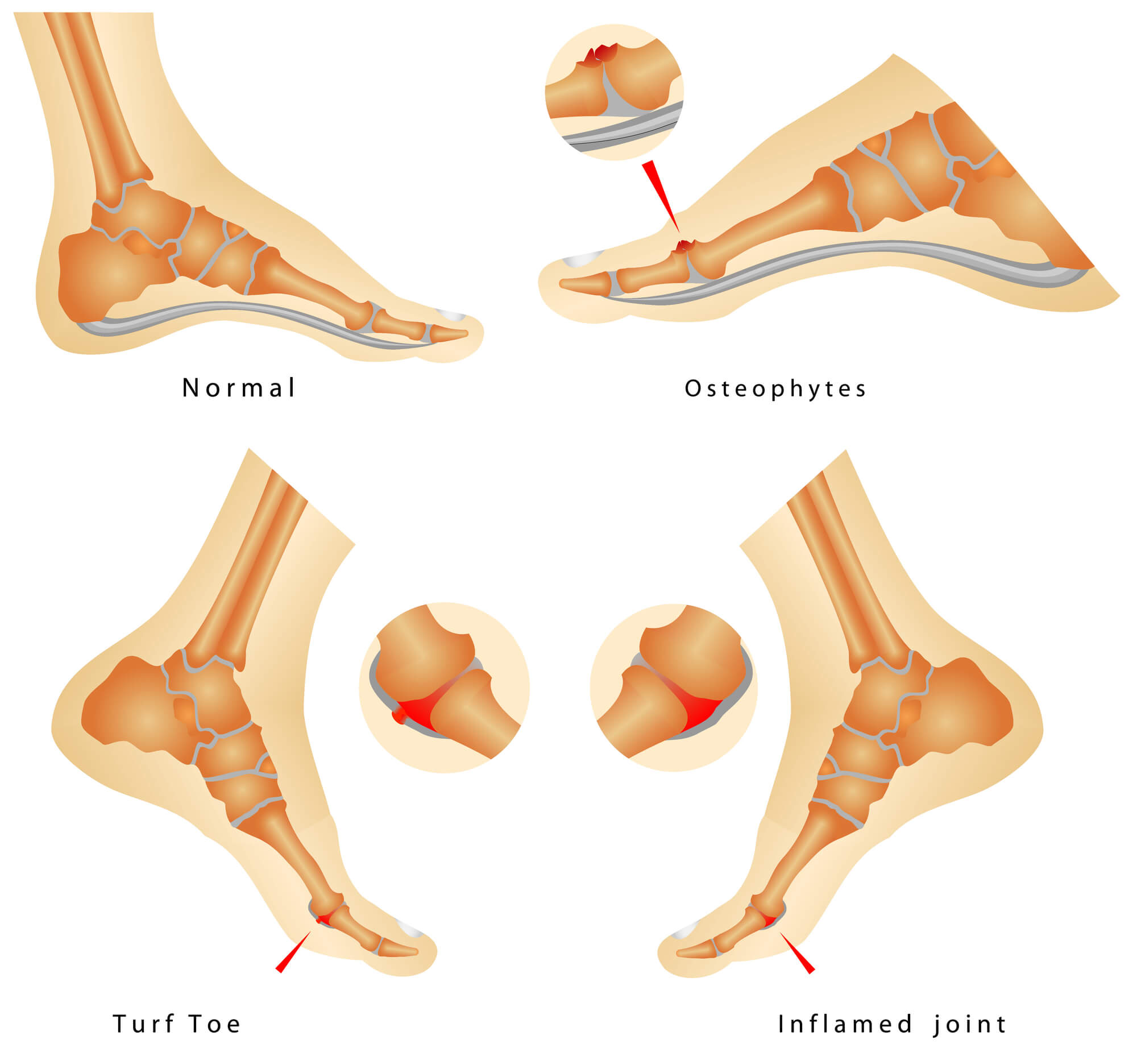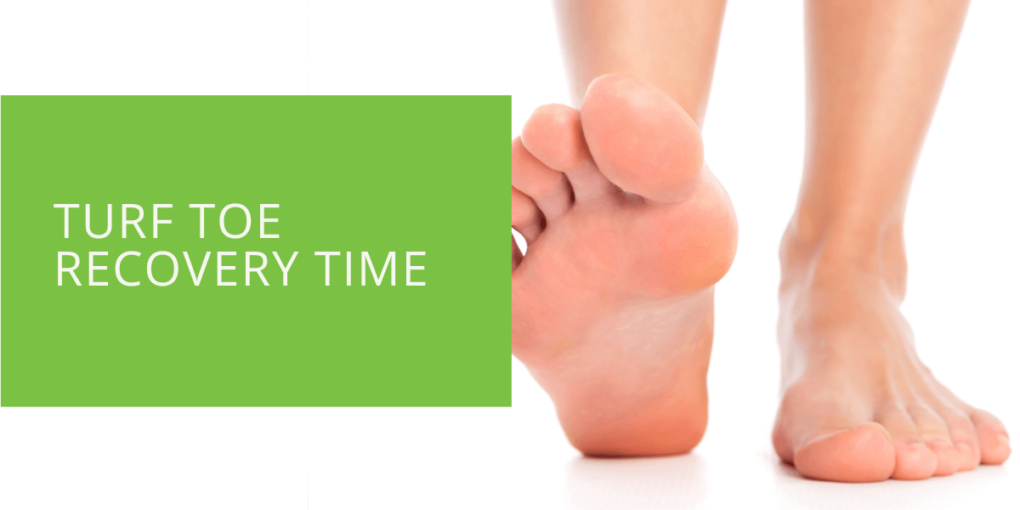Turf Toe Recovery Time
Turf toe is a common injury affecting the big toe's metatarsophalangeal (MTP) joint. It occurs when the ligaments surrounding the joint are sprained or injured, often due to excessive force or hyperextension. Understanding recovery and treatment options is crucial for a successful turf toe rehabilitation journey. In this article, we will delve into the details of turf toe recovery time, exploring the different grades of injuries, treatment options, and factors that influence healing.
Understanding Turf Toe
Turf toe is characterized by pain and swelling at the base of the big toe. It is classified into three grades based on the severity of the injury. Grade 1 involves mild stretching of the ligaments, grade 2 refers to a partial tear, and grade 3 indicates a complete tear of the ligaments. Proper diagnosis, usually through a physical examination and imaging such as an MRI, helps determine the extent of the injury and guides treatment decisions.
Factors Affecting Recovery Time
Several factors influence the recovery time for turf toe. The grade of the injury plays a significant role, with grade 3 injuries typically taking longer to heal than grades 1 and 2. Other factors include the individual's overall health, adherence to treatment protocols, accompanying injuries, and the level of physical activity during the recovery period. It's important to note that each case is unique, and recovery times can vary.
Typical Recovery Timeline for Turf Toe
The recovery timeline for turf toe varies depending on the grade of the injury and individual factors. Understanding the expected progression of healing can help individuals manage their expectations and take appropriate measures during each recovery phase. Here is a breakdown of the typical timeline for each grade of turf toe injury:
Grade 1 Turf Toe Recovery Timeline
Grade 1 turf toe injuries involve mild stretching of the ligaments around the toe joint without significant tearing. The recovery timeline for grade 1 injuries is usually shorter than for higher grades. Here's a breakdown of the different stages of recovery:
- Initial Phase (Weeks 1-2): During the first couple of weeks, immediate treatment focuses on reducing pain, swelling, and inflammation. Rest, ice, compression, and elevation (RICE) are commonly recommended. Applying ice packs for 15-20 minutes every few hours and taking over-the-counter pain relievers as directed can help manage symptoms.
- Intermediate Phase (Weeks 2-4): Individuals can gradually introduce gentle range-of-motion exercises and begin weight-bearing activities as the acute symptoms start to subside. Physical therapy may be initiated to improve flexibility, strength, and stability. It's important to progress gradually and avoid excessive stress on the toe joint.
- Advanced Phase (Weeks 4-6 and beyond): By this stage, most individuals with grade 1 turf toe injuries experience a significant reduction in pain and swelling. Physical therapy focuses on strengthening the muscles around the toe joint and improving balance and coordination. Return to full activity is typically possible within 4-6 weeks, depending on individual progress and the demands of the specific activities involved.
Grade 2 Turf Toe Recovery Timeline
Grade 2 turf toe injuries involve partial tearing of the ligaments, causing more significant damage and instability in the toe joint. The recovery timeline for grade 2 injuries is typically longer compared to grade 1. Here's a breakdown of the different stages of recovery:
- Initial Phase (Weeks 1-3): Similar to grade 1 injuries, immediate treatment involves RICE therapy to reduce pain, swelling, and inflammation. Immobilization in a walking boot or stiff-soled shoe may be recommended to support and stabilise the injured joint. Non-weight-bearing activities are often encouraged during this phase.
- Intermediate Phase (Weeks 3-6): As symptoms improve, controlled range-of-motion exercises and physical therapy are initiated. Strengthening exercises target the muscles surrounding the toe joint, while flexibility exercises help restore the joint's range of motion. Gradual weight-bearing activities may be introduced based on individual progress and pain tolerance.
- Advanced Phase (Weeks 6 and beyond): During this stage, individuals with grade 2 injuries experience continued improvement in pain, swelling, and stability. Physical therapy focuses on strengthening and functional exercises to restore normal movement patterns. The return to full activity can be expected within 6-10 weeks, depending on individual progress and the specific demands of the activities involved.

Grade 3 Turf Toe Recovery Timeline
Grade 3 turf toe injuries involve complete tearing of the ligaments, resulting in significant instability and functional limitations. The recovery timeline for grade 3 injuries is usually the longest, requiring more intensive treatment and rehabilitation. Here's a breakdown of the different stages of recovery:
- Initial Phase (Weeks 1-4): Immediate treatment involves immobilization in a walking boot or specialized shoe to protect the toe joint and promote healing. Non-weight-bearing or partial weight-bearing activities are typically recommended during the initial phase. The focus is on reducing pain, swelling, and inflammation through RICE therapy.
- Intermediate Phase (Weeks 4-8): As the acute symptoms subside, controlled range-of-motion exercises and physical therapy are initiated. These exercises help maintain flexibility in the toe joint and prevent stiffness. Strengthening exercises are gradually introduced to target the surrounding muscles, promoting stability and supporting the injured ligaments. Weight-bearing activities may be introduced under the guidance of a healthcare professional.
- Advanced Phase (Weeks 8 and beyond): In this stage, individuals with grade 3 turf toe injuries experience continued improvement in pain, swelling, and joint stability. Physical therapy focuses on advanced strengthening exercises to restore optimal function and range of motion. The goal is to regain full strength and flexibility while ensuring proper biomechanics and preventing re-injury. The return to full activity and sports participation can take several months, usually ranging from 10 to 16 weeks or longer, depending on the individual's progress, specific treatment plan, and the demands of the activities involved.
Turf Toe Treatment and Rehabilitation
The treatment approach for turf toe depends on the grade of the injury. Grade 1 injuries usually respond well to conservative measures such as rest, ice, compression, elevation (RICE) and taping or bracing for added support. Grade 2 injuries may require immobilization in a walking boot or stiff-soled shoe to promote healing. Physical therapy is crucial in rehabilitating turf toe, focusing on strengthening exercises, range of motion, and balance training. Grade 3 injuries may necessitate surgical intervention to repair torn ligaments.
Factors Delaying Turf Toe Recovery
Several factors can delay the recovery process for turf toe. Inadequate rest and premature return to activity can exacerbate symptoms and prolong healing. Improper immobilization, failure to follow recommended treatment protocols, and reinjury can also hinder recovery. It is essential to closely follow a podiatrist's or healthcare professional's advice to ensure a smooth and efficient recovery process.
When to Seek Professional Help
While many turf toe injuries can be managed with conservative measures, it's important to seek professional help in certain cases. If symptoms worsen, there is severe pain and swelling, or if the toe joint remains unstable despite conservative treatment, it's advisable to consult a podiatrist. They can assess the injury, provide expert guidance, and recommend appropriate treatment options tailored to the individual's needs.
Conclusion
Turf toe recovery time depends on various factors, including the grade of the injury and individual circumstances. Understanding the different grades, treatment options, and factors influencing healing is crucial for an effective recovery. Patience, adherence to treatment protocols, and professional guidance are key to a successful rehabilitation journey. Following a comprehensive approach, individuals can maximize their chances of full recovery and return to their desired activity level. Remember that grade 1 injuries generally have a shorter recovery time, while grade 3 injuries may require more extensive treatment and a longer recovery period.

